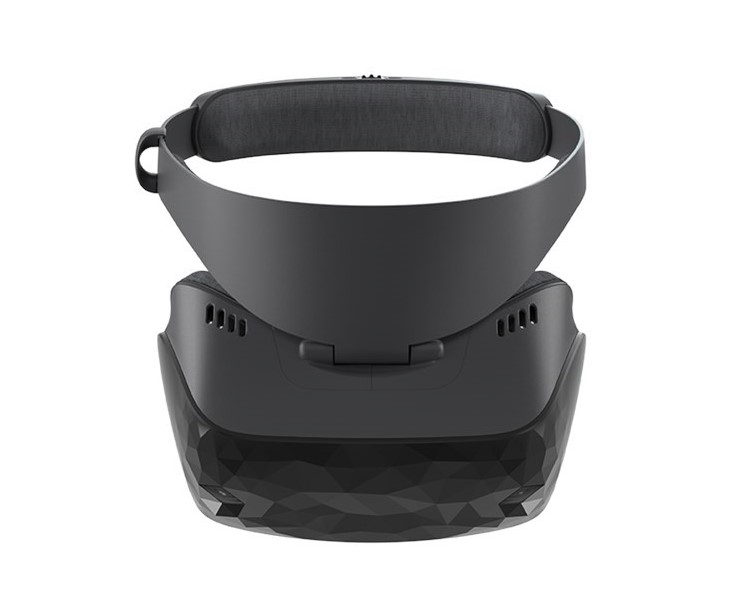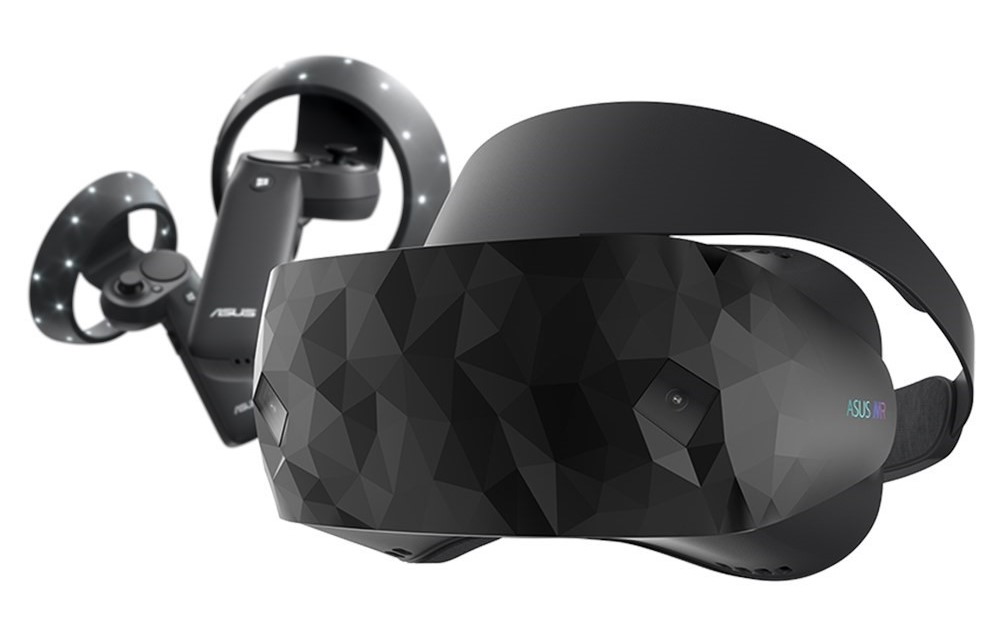Asus Reveals Details About Its Windows Mixed Reality Headset
Asus revealed new details about its upcoming Windows Mixed Reality headset, including specifications and price--essentially everything except for timing.
Microsoft is gearing up for the Windows 10 Fall Creators Update, which will introduce the company’s virtual reality platform: Windows Mixed Reality. Leading up to IFA in Berlin, Microsoft invited journalists to test out the Windows MR motion controllers, which may have kick-started a chain reaction of announcements from Windows MR hardware partners. On Monday, Dell revealed its aptly named Visor HMD. Tuesday, Acer spoke briefly of its Windows Mixed Reality HMD, though it didn’t reveal anything we didn’t already know about the bright blue headset. And now today, Asus played its mixed reality hand.
Unlike Dell, Asus didn’t give its HMD a fancy name. It's simply the Asus Windows Mixed Reality Headset. It offers dual 1440 x 1440 pixel displays (for a total of 2880 x 1440) that operate at up to 90Hz. The HMD also includes the typical sensors you would expect, such as a gyroscope, accelerometer, and magnetometer. Microsoft’s Windows MR platform offers inside-out tracking (6DoF) systems that don’t require external cameras, and each Windows MR HMD features two front-facing cameras that provide spatial tracking for the unit. The Asus headset also includes a proximity sensor. We’re not yet sure if that’s standard equipment for Windows MR headsets or a unique feature of the Asus HMD.


Asus said it focused on designing a headset that would offer good hygiene. Room-scale VR games get you up and moving, and it’s not uncommon to break a sweat while playing an active game. Asus said that the face cushion on its Windows MR headset is made of a fast-drying material with an anti-bacterial coating on the surface.
The Windows MR platform is billed as a productivity platform as much as it is an entertainment platform. Microsoft sees a future where you’ll do your work within VR and then play games in VR with the same hardware. Asus made sure that its headset is comfortable to wear for long periods of time. It features a “balanced crown” design, which takes the pressure off of your cheeks and nose and distributes the weight between your forehead and the back of your head. Also, the headset weighs less than 400g, so it should put minimal stress on your neck.
Asus didn’t say when it would release the Asus Windows Mixed Reality Headset, though it said the hardware would sell with Microsoft’s motion controllers for €449. The company didn’t reveal the US price. Dell’s Visor headset is scheduled for an October release, and we imagine that Asus would shoot for a similar launch window.
| HMD | Asus Windows Mixed Reality Headset |
|---|---|
| Display | 2.89-inch diagonal display size (2) 1440x1440 (per eye), 2880x1440 (combined) 100 nits brightness |
| Display Refresh Rate | 90Hz |
| Field of View | 95 degrees horizontal Fresnel-Aspherical |
| Sensors | Gyroscope, Accelerometer, Magnetometer, P-sensor |
| Camera | inside-out tracking camera (2) |
| Audio | 3.5mm audio jack (1) |
| Connectivity | Headset connection cable (1) Cable Length: 4 meters Host Connectivity: HDMI 2.0 (display) with USB 3.0 (data) |
| Weight | Under 400g |
| Accessories | 6DoF controller (2) |
Get Tom's Hardware's best news and in-depth reviews, straight to your inbox.
Kevin Carbotte is a contributing writer for Tom's Hardware who primarily covers VR and AR hardware. He has been writing for us for more than four years.
-
zippyzion VR is coming. Finally more companies are coming out with headsets.Reply
Actually, I'm more of a fan of the built in tracking feature. I don't like the idea of being tied to base stations used for tracking. Sure, they may be more accurate by a smidge, but freedom of movement and mobility are more important for immersion. That and these would be ideal for a VR laptop as you just don't need to set up a bunch of other stuff to get room scale VR. It is just as easy to use in a hotel room or at a friend's place as it is at home, and I think that is pretty snazzy. -
ObamasBFF No external tracking means input lag which means motion sickness. Bad VR is what will kill VR. I think Google Cardboard has done more to slow the growth of VR than anything else - people buy a $10 cardboard ripoff, the see it and go "uh this is the big deal that everyone is saying about VR" and then they think the Rift and Vive are the same thing.Reply -
zippyzion I don't know about that ObamasBFF. I'm a regular mobile VR user and while the performance of the Gear VR, Cardboard, and Daydream (I've tried them all) is decidedly low end, most of the people I show it to are far more ooh and ah than apathetic. Once I say that this is the low end of the capability their interest in it improves. I'd say the Gear VR has had the biggest impact on friends I've shown it to because all of them that had Gear VR ready phones went and got a Gear VR. Of the ones that didn't have Samsung phones, most went for one of those plastic $30 headsets from Amazon. It is an easily enjoyably medium that is just begging for more content. Something between a phone experience and a Vive/Rift experience is desperately needed to hook more people and grow the platform. If this Windows Mixed Reality system can do that, then VR will be just fine. It sounds like these headsets have 90% of the features and functionality of the high end headsets, at least. If these can't hook more people then the 2nd gen gaming headsets (whenever those come out) are our last real shot at getting VR off the ground this decade.Reply
In your example all people really need is context. If that is all that is holding people back, things are going to turn our just fine for VR.
